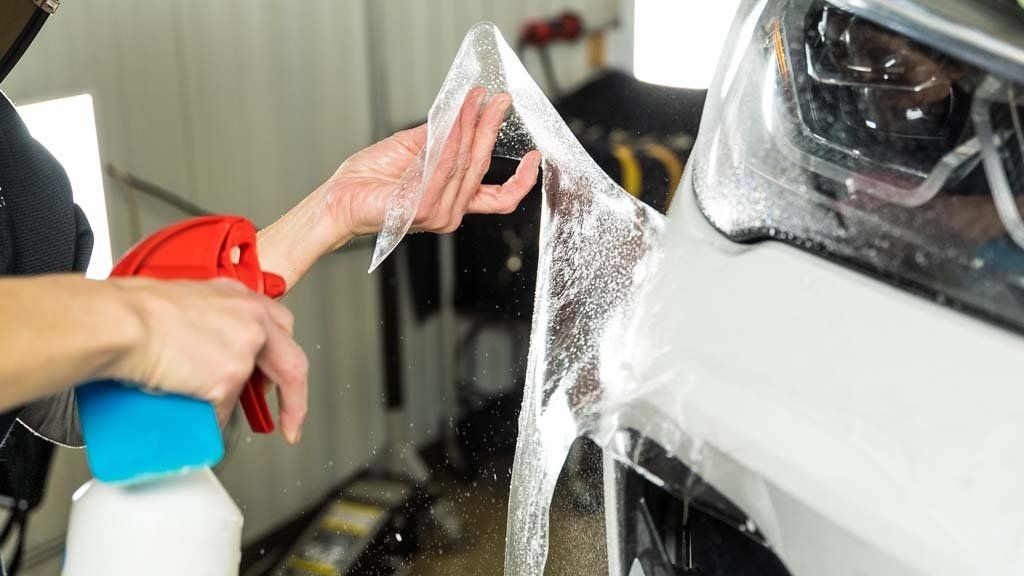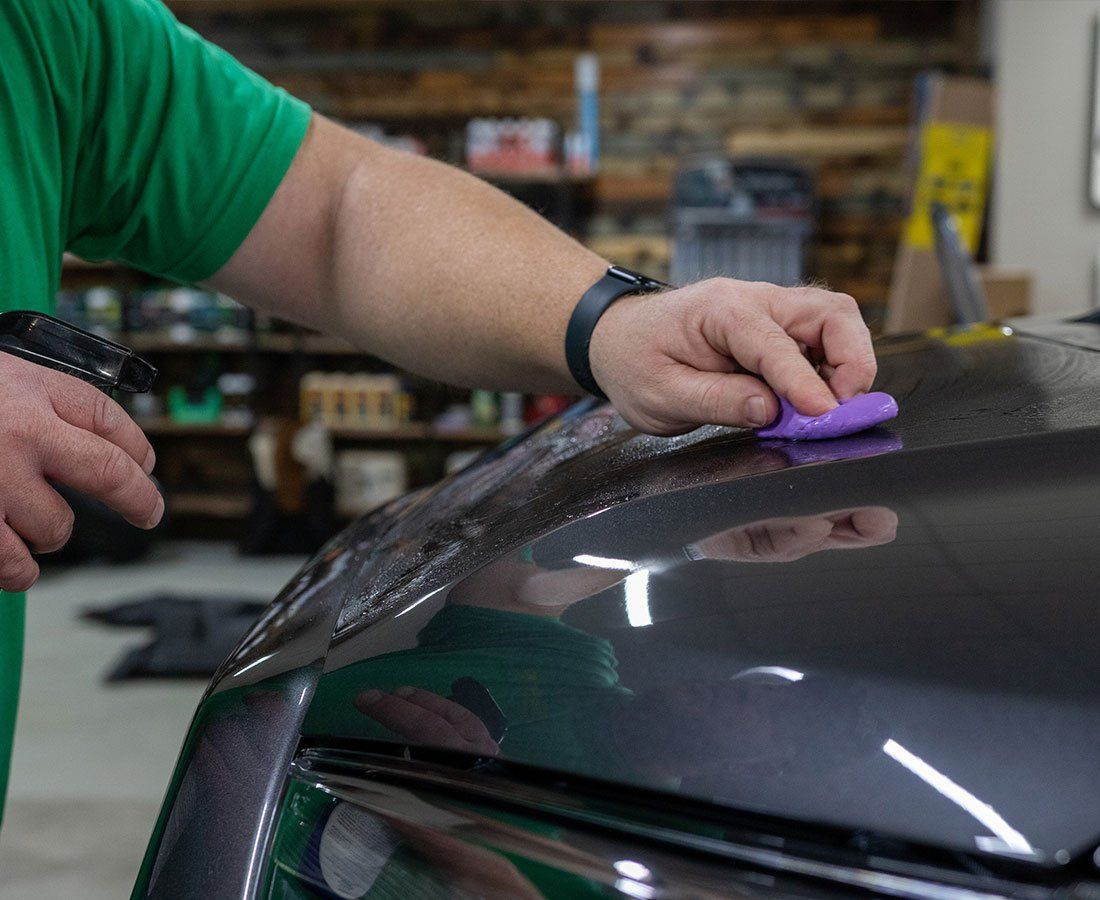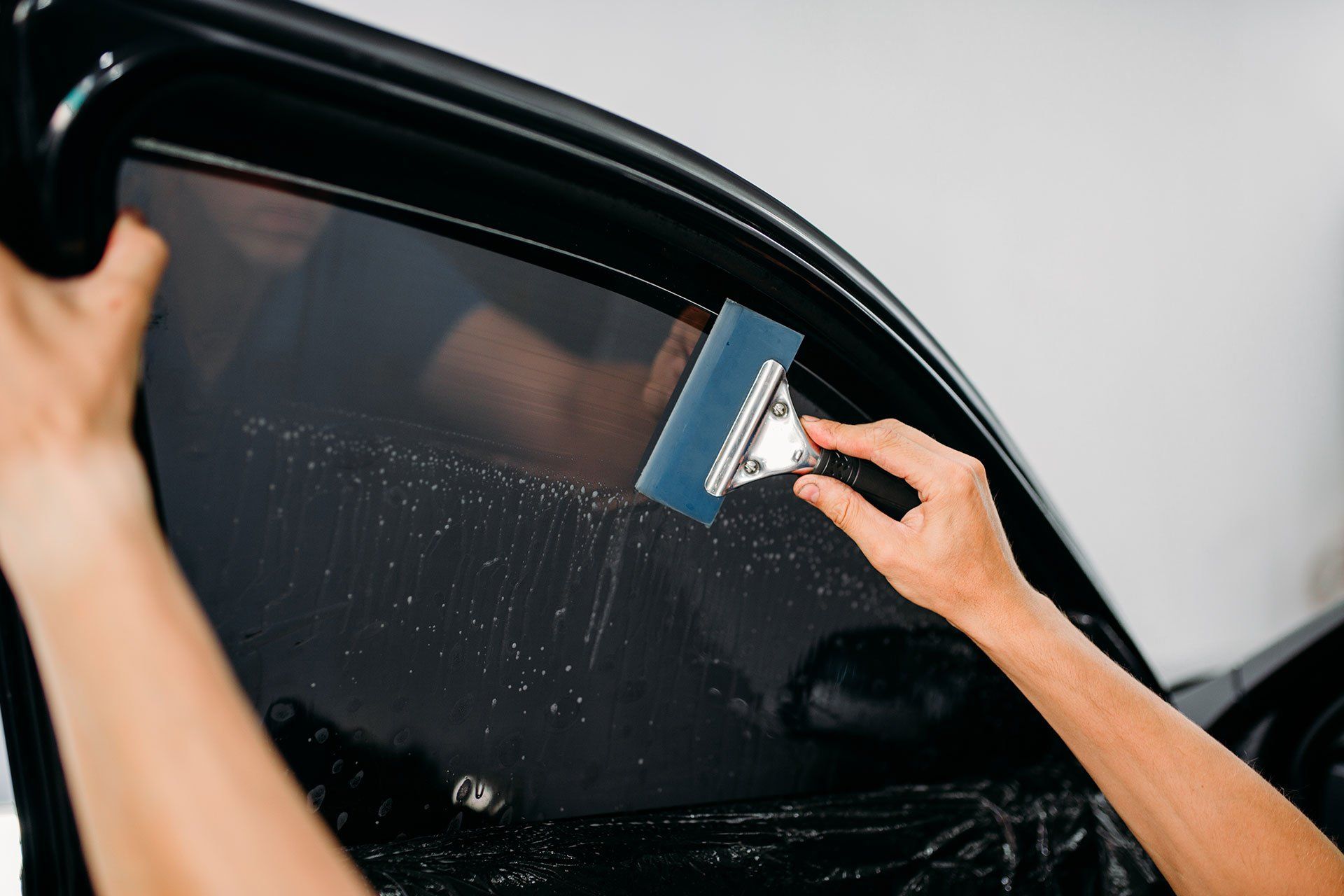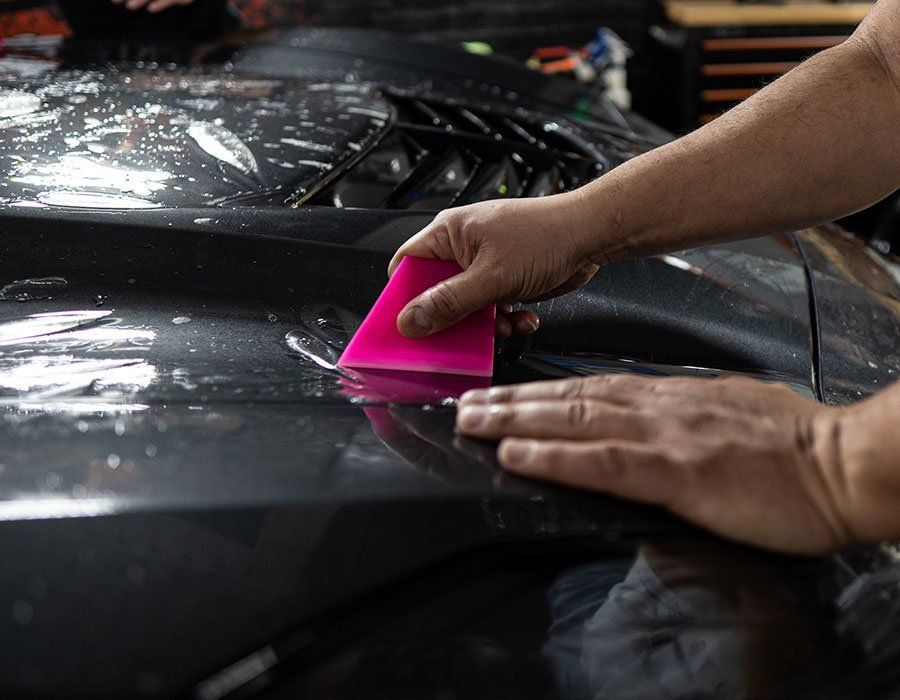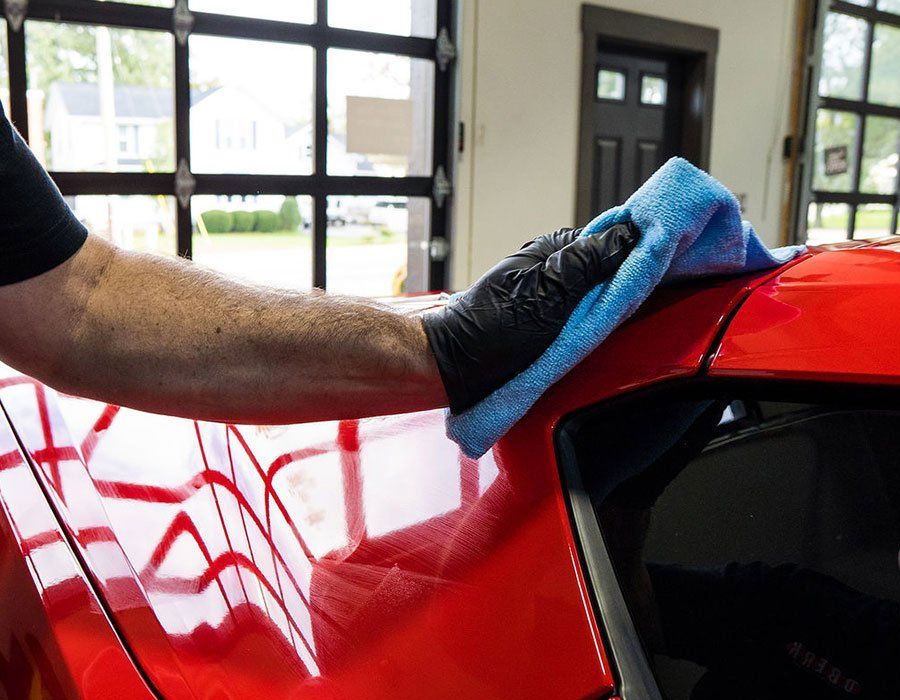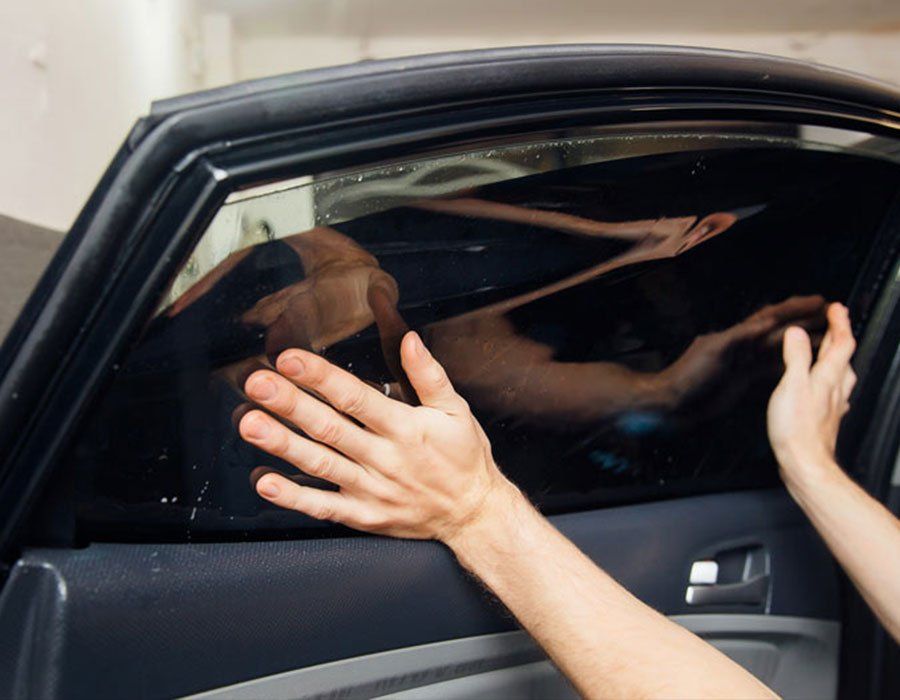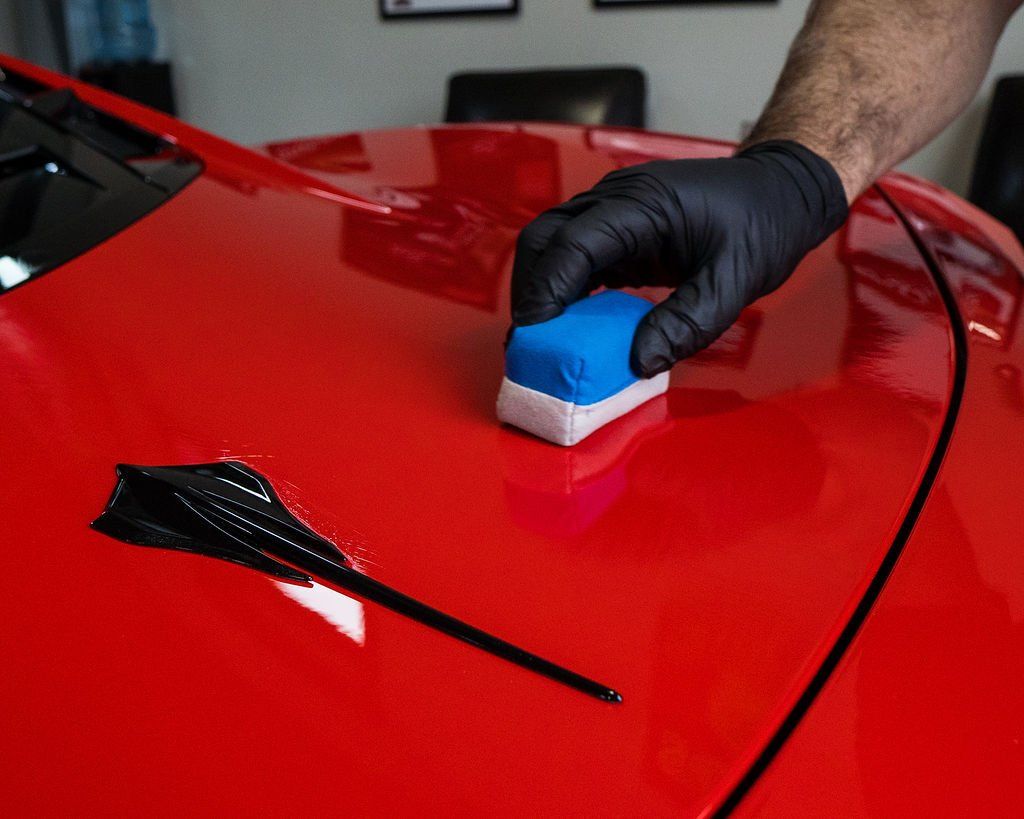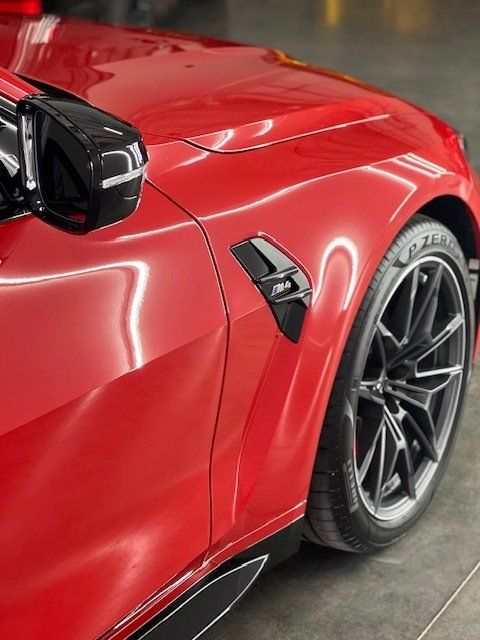Exploring the Role of UV Protection in Ceramic Coatings: Benefits and Effectiveness
CALL (727) 940-2340
SCHEDULE NOWCeramic coatings serve as a shield, protecting surfaces from harmful ultra-violet rays. These coatings are made of tiny ceramic particles mixed with Ceramic coatings outperform conventional coatings by offering about 95% UV blockage, as opposed to the 70% blockage that conventional alternatives provide. resin, forming a clear but tough barrier. It’s like a barrier that catches and scatters the potent ultraviolet light, stopping it from reaching and damaging what's beneath. So, it’s not just a case of fading colors or surfaces getting rough; it goes beyond that, guarding the actual structure of the material underneath. This layer, simple yet powerful, ensures an effective guard against sun-induced wear and tear. And so begins our understanding of ceramic coatings and their safeguarding role against UV damage.
Ceramic coatings create a thin, transparent layer that acts as a barrier between the surface and UV rays, preventing damage such as fading, discoloration, and structural damage. The ceramic particles in the coating serve as a protective shield, enhancing the longevity of the surface's appearance.
Ceramic Coatings Basics and UV Protection
Ceramic coatings are like a shield for your car or building. They are made up of tiny ceramic particles mixed into a clear, strong resin. When this mixture is applied to a surface, it creates a transparent protective layer that keeps harmful elements at bay. This thin layer acts as a barrier between the painted surface and environmental factors, providing an extra level of defense. The very composition of ceramic coatings allows them to excel in UV protection. Ultraviolet radiation from the sun can be quite damaging to surfaces, causing colors to fade, materials to discolor, and structural integrity to degrade over time. This is where the magic of ceramic coatings comes into play. With their ability to block UV rays, these coatings effectively prevent such damage from occurring.
Fun Fact: Just like how sunscreen protects your skin from UV rays, ceramic coatings safeguard your vehicle's paint and other surfaces from UV radiation.
Imagine your car parked under the sun for hours on end—the UV rays are relentless in their assault on its exterior. However, with a ceramic coating in place, the harmful effects of UV rays are significantly reduced. It's important to note that not all coatings offer the same level of UV protection. Ceramic coatings outperform conventional coatings by offering about 95% UV blockage, as opposed to the 70% blockage that conventional alternatives provide. Moreover, the impact of UV exposure on material degradation is notably lower with ceramic coatings than with traditional ones.
Consider this: When your car is treated with a ceramic coating, you’re increasing its resistance to material degradation by up to 10%, compared to a traditional coating, which only decreases material degradation by up to 30%. These statistics speak volumes about the efficacy of ceramic coatings in mitigating the effects of UV radiation. Additionally, ceramic coatings' impressive UV protection longevity—up to 5 years—outshines that of conventional coatings, which only provide protection for up to 2 years. In essence, the combination of their durable composition and remarkable UV protection capability makes ceramic coatings an invaluable asset in preserving and prolonging the life of surfaces.
Mechanisms of UV Protection in Ceramic Coatings
Imagine your car's paint as a medieval castle and UV radiation as attacking hordes. Ceramic coatings act like a mighty shield, protecting the castle from harm. The key to this defense lies in the composition of ceramic particles and how they interact with UV light.
Ceramic coatings are crafted with minute ceramic particles suspended within a clear, durable resin. These particles form a barricade against UV rays, absorbing and dispersing the harmful radiation before it can reach the surface beneath. Much like an expert archer picking off assailants from a distance, the ceramic particles neutralize the UV light, preventing it from penetrating the surface and causing damage.
This protective characteristic is akin to having soldiers stationed at different points along the castle walls, intercepting enemy arrows before they breach the outer defenses. By intercepting UV rays, ceramic coatings ensure that damaging effects such as fading, discoloration, and structural damage are kept at bay. This means that your vehicle retains its glossy finish and structural integrity for an extended period, standing strong against the relentless assault of UV radiation.
So, just as a well-crafted shield protects a soldier from harm on the battlefield, ceramic coatings fortify your vehicle against the onslaught of UV rays, ensuring it remains unscathed by their damaging effects over time.
Advantages of UV-protective Ceramic Coatings
Ceramic coatings have been making quite a splash in the world of surface protection, and for good reason! The UV-protective properties of these coatings bring several significant advantages that go beyond just sunblock for your car or other surfaces. Let's explore some of these essential advantages.
Long-Term Protection
UV-protective ceramic coatings offer extended protection against UV radiation, safeguarding the surface from gradual deterioration due to prolonged exposure to sunlight. This extended protection translates to a longer life for your surfaces, whether it's your car's paint, outdoor furniture, or architectural elements of your home. Say goodbye to worries about sun-induced wear and tear, as ceramic coatings act as a shield against structural damage and premature aging caused by UV exposure.
Maintaining Aesthetic Appeal
By preventing UV-induced fading and discoloration, ceramic coatings help maintain the original color and finish of the surface, preserving its visual appeal over time. This preservation of visual appeal is particularly crucial for vehicles, where the original paint job represents both a significant investment and an aesthetic statement. Ceramic coatings effectively act as a barrier against common sources of aesthetic degradation, keeping surfaces looking vibrant and fresh despite continuous exposure to sunlight.
Structural Preservation
Ceramic coatings' UV protection aids in preventing structural damage to surfaces, ensuring longevity and durability. Rather than just being a cosmetic enhancement, UV-protective ceramic coatings play a critical role in preserving the strength and durability of various materials like car paint, glass, and metal. For instance, automotive enthusiasts are well aware of how vital it is to protect a car's finish from the harsh effects of UV radiation. The durability benefits provided by ceramic coatings can extend far beyond aesthetics, potentially prolonging the overall lifespan of a vehicle and aiding in maintaining its market value over time. In essence, the advantages of UV-protective ceramic coatings go beyond mere aesthetics; they encompass long-term protection, visual appeal preservation, and structural soundness, making them essential for anyone seeking durable and resilient surface protection against UV radiation.
Picking a Suitable UV-protective Ceramic Coating
Choosing the right UV-protective ceramic coating is crucial to maximizing the benefits of UV protection for your specific application surface. Let's explore some key considerations that will help you make an informed decision.
Consider the Application Surface
The first step in selecting a UV-protective ceramic coating is to consider the surface on which it will be applied. Different surfaces have varying requirements for UV protection. For instance, if you are looking to protect automotive paint, you'll need a coating specifically formulated for automotive surfaces to ensure optimal adhesion and performance. Similarly, building exteriors or other materials may have unique characteristics that require tailored UV protection solutions. It's important to choose a coating that is compatible with the specific surface type to ensure effective UV shielding and long-term durability. Choosing a coating specifically formulated for the surface type is critical to ensuring compatibility and maximizing UV protection benefits.
Assess UV Protection Rating
UV protection ratings play a significant role in determining the effectiveness of a ceramic coating in shielding against harmful UV radiation. When evaluating different coatings, look for those with high UV protection ratings, as this indicates superior resistance to UV damage over an extended period. A high UV protection rating ensures comprehensive shielding against UV radiation, helping preserve the appearance and integrity of the underlying surface.
It's important to note that the longevity of the UV protection provided by a coating is directly linked to its UV protection rating. Higher-rated coatings offer enhanced defense against the adverse effects of prolonged UV exposure, making them well-suited for applications where long-term UV protection is essential.
Review Manufacturer's Recommendations
Manufacturers provide valuable insights and recommendations regarding the suitability of their ceramic coatings for UV protection in specific applications. It's crucial to review and adhere to the manufacturer's guidelines when selecting a UV-protective coating. By consulting the manufacturer's recommendations, you can gain a deeper understanding of the coating's performance in terms of UV protection and make an informed decision based on expert guidance.
Manufacturer-recommended coatings are designed and tested to deliver reliable UV protection, making them a trusted choice for safeguarding surfaces from sun-induced damage. By aligning with the manufacturer's recommendations, you can ensure that the selected coating is optimized for providing effective and durable UV protection, tailored to your unique application requirements. By incorporating these considerations into your selection process, you can confidently choose a suitable UV-protective ceramic coating that offers robust defense against UV radiation while meeting the specific needs of your application surface.
Ensuring Long-lasting UV Protection
Upon investing in a ceramic coating to safeguard your car from harmful UV rays, it's essential to ensure that the protection remains effective for as long as possible. Here are some key strategies to maintain long-lasting UV protection:
Follow Proper Application Procedures
Applying the ceramic coating properly is crucial for ensuring optimal UV protection. Different coatings have specific application instructions provided by the manufacturer, including the ideal curing time, environmental conditions for application, and the number of layers required. Adhering to these guidelines plays a significant role in the coating's ability to ward off UV radiation effectively.
Proper preparation of the surface before applying the ceramic coating is also vital for maximizing its UV protection capabilities. This typically involves thorough cleaning, degreasing, and possibly surface correction procedures such as paint polishing. By preparing the surface meticulously, you provide the ceramic coating with the best foundation to bond and create a durable shield against UV rays.
Regular Maintenance
Periodic maintenance and care are imperative for preserving the UV resistance of ceramic coatings over time. Regular inspections can help identify any areas where the coating may have worn off or become compromised, thus allowing for timely corrective action.
For instance, regular cleaning with a pH-neutral shampoo and microfiber wash mitt not only removes dirt and grime but also prevents these particles from deteriorating the ceramic coating's UV defense. Additionally, certain manufacturers recommend periodic reapplication of their ceramic coatings to bolster UV protection, making it essential to follow these replenishment schedules for sustained performance.
Furthermore, it's important to consult with and adhere to the specific maintenance recommendations provided by the ceramic coating manufacturer. These guidelines often include information on compatible cleaning products, suitable techniques, and ideal reapplication intervals tailored to maximize UV protection. By following stringent application protocols and implementing routine maintenance practices, you can extend and uphold the long-term effectiveness of your ceramic coating's UV protection, ensuring that your surfaces are shielded against the damaging effects of ultraviolet radiation.
Addressing Potential Drawbacks and Maintenance Needs of Ceramic Coatings
When considering ceramic coatings for your car or other surfaces, it's crucial to acknowledge the potential drawbacks and requirements associated with this protective application. Let's take a closer look at these aspects and explore strategies for effectively managing them.
Cost Considerations
The initial expenses involved in applying a ceramic coating can be a concern for many individuals. However, it's important to recognize that, while there is an upfront cost, the long-term benefits of UV protection and overall surface preservation often outweigh these initial investments. Ceramic coatings have proven to shield surfaces from environmental elements, prevent oxidation and color fading, and reduce the need for frequent waxing or polishing. This can result in cost savings over time, making it a worthwhile investment for those seeking durable protection for their vehicle or other treated surfaces. Before becoming hesitant about the initial expenses, remember that ceramic coatings are more than just a glossy finish; they offer invaluable protection and preservation features that contribute to the extended lifespan of your car's exterior.
Durability and Maintenance
While ceramic coatings are celebrated for their durability and resistance to environmental hazards, it's essential to understand that proper care and maintenance are crucial for sustaining their UV protection and performance over time. Regular cleaning is necessary to remove dirt, grime, and contaminants that can compromise the coating's effectiveness. Additionally, periodic reapplication is recommended to ensure that the protective layer remains intact and fully functional.
Think of a ceramic coating as a shield for your car's paintwork—it provides a robust barrier against UV rays, water spots, bird droppings, and other harmful substances. However, just like any shield, it requires maintenance and occasional strengthening to continue offering reliable protection. By committing to regular upkeep and following manufacturer guidelines for reapplication, you can prolong the effects of the ceramic coating and enjoy its long-term benefits without compromise.
In essence, while considering the costs and upkeep associated with ceramic coatings is important, recognizing the enduring benefits they offer makes them a worthy investment for those seeking reliable UV protection and overall surface preservation.
Leading-edge Ceramic Coating Offerings in Tampa, FL
Looking to give your car the ultimate protection against the harsh Florida sun and elements? Look no further than Auto Film Guys in Tampa, FL, where we offer cutting-edge ceramic coating services that will keep your vehicle looking pristine for years to come. Say goodbye to worrying about fading paint or damage from UV rays – our ceramic coating provides unparalleled protection, enhancing the durability and appearance of your car. Whether you're a car enthusiast looking to keep your prized possession in top condition or simply want to maintain the value of your vehicle, our expert team at Auto Film Guys has you covered. Don't settle for subpar protection, experience the difference with our leading-edge ceramic coating today! Schedule your appointment now and give your car the defense it deserves.
The Auto Film Guys Blog
